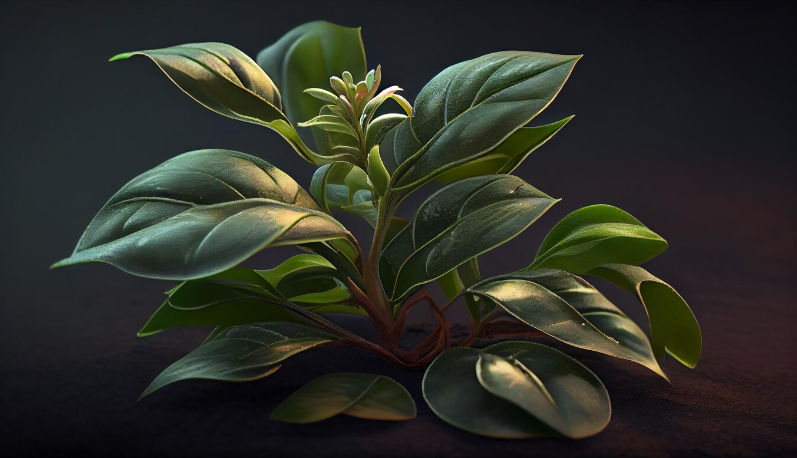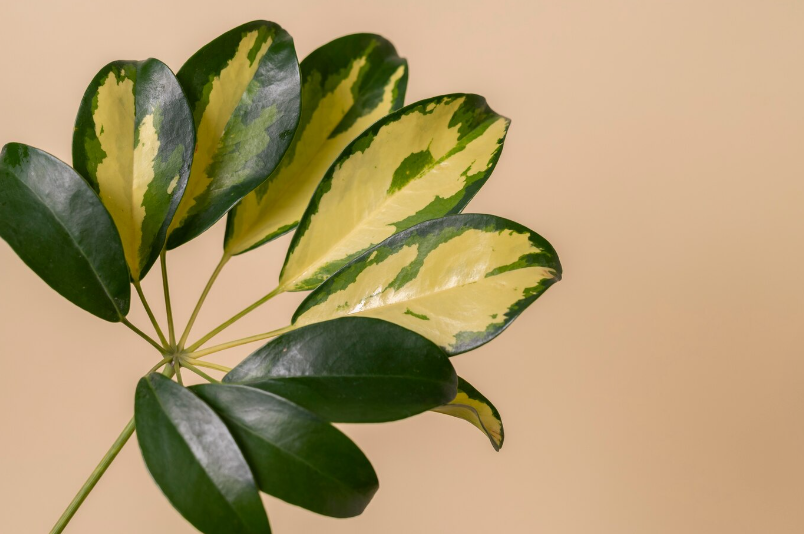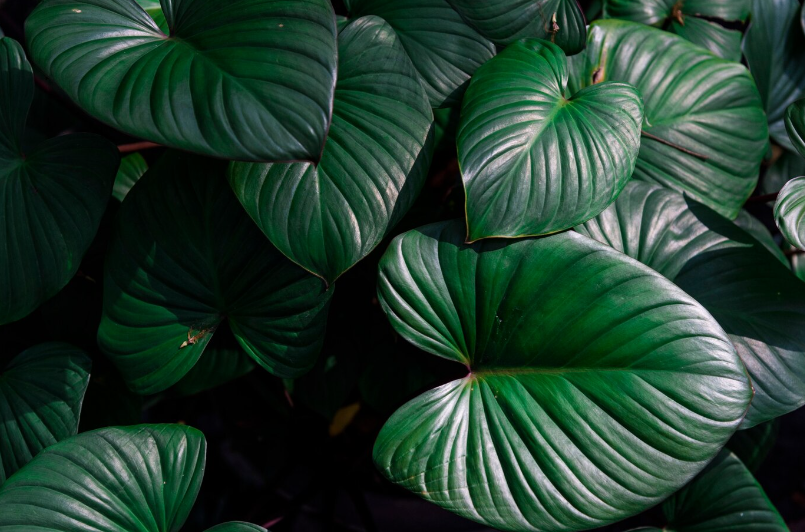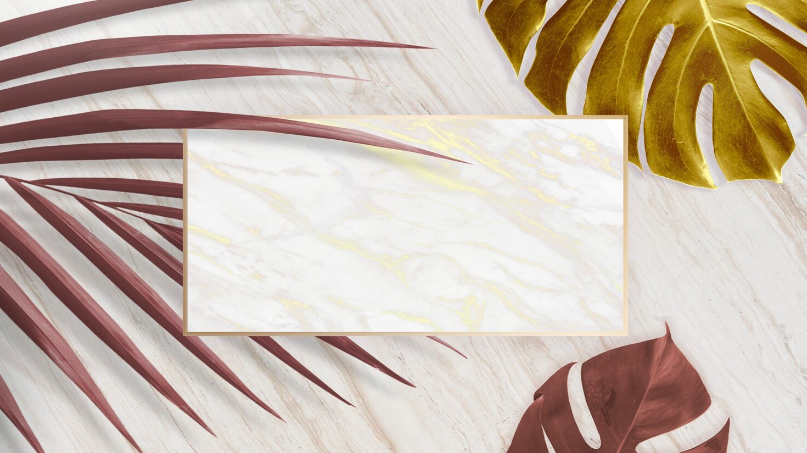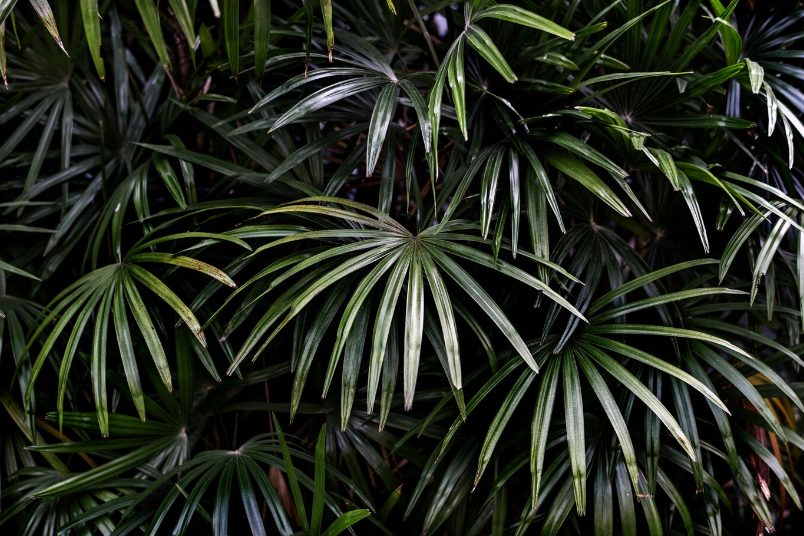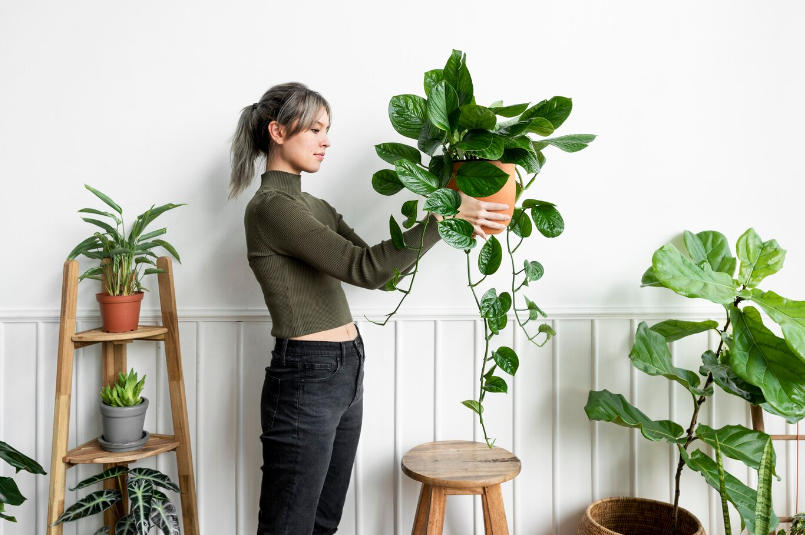Mastering Hydration for Philodendron Pink Princess and Split Leaf Varieties
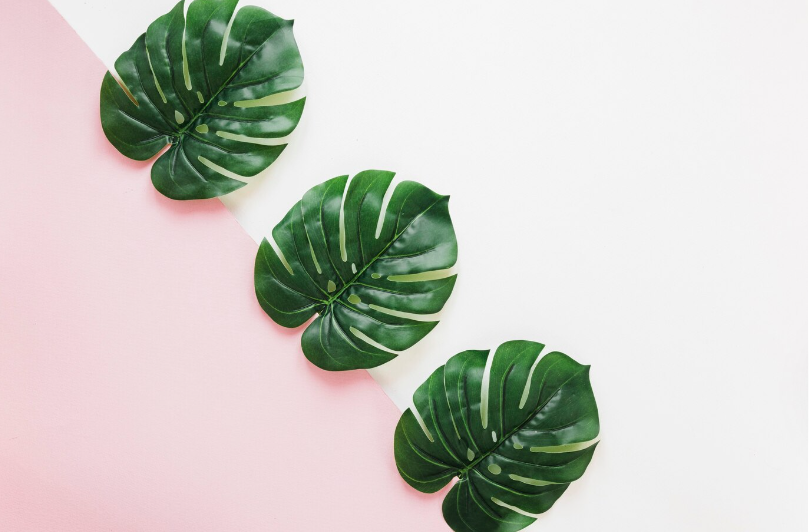
The world of indoor gardening has been captivated by the beauty and allure of Philodendron Pink Princess and Split Leaf varieties. These stunning houseplants have captured the hearts of plant enthusiasts with their vibrant foliage and unique patterns. However, these beauties require proper care and attention to thrive, and one crucial aspect that can make or break their success is hydration.
Hydration is the key to unlocking the full potential of your Philodendron Pink Princess and Split Leaf varieties. These plants are native to tropical regions and have adapted to thrive in high humidity environments. As such, providing them with adequate moisture is essential for their overall health and growth.
To master the art of hydration for these plants, it is crucial to understand their specific needs. Philodendron Pink Princess and Split Leaf varieties prefer moist soil but are susceptible to root rot if overwatered. Striking the right balance is the key to keeping these plants happy and thriving.
One technique that has proven effective for maintaining optimal hydration for these varieties is the “soak and dry” method. This method involves thoroughly watering the plant until water drains out from the bottom of the pot, allowing the roots to absorb as much water as needed. Once the soil dries out, it is time to water again, ensuring that the roots receive the right amount of moisture without becoming waterlogged.
Another crucial aspect of hydration is providing adequate humidity. Philodendron Pink Princess and Split Leaf varieties thrive in high humidity environments, similar to their natural habitat. To simulate these conditions, you can use a humidifier or place the plants on pebble trays filled with water. Misting the leaves regularly can also help increase humidity levels, preventing them from drying out.
In conclusion, mastering the art of hydration for Philodendron Pink Princess and Split Leaf varieties is vital for their overall health and beauty. By understanding their specific needs and implementing proper watering techniques, you can ensure that these stunning plants thrive in your care and bring joy to your indoor garden.
Optimal Watering and Moisture Management
Proper watering techniques are essential for the health and vitality of Philodendron Pink Princess and Split Leaf varieties. It’s important to strike the right balance to avoid overwatering or underwatering these plants.
Here are some tips for optimal watering and moisture management:
1. Watering Schedule: Philodendron Pink Princess and Split Leaf varieties should be watered when the top one to two inches of soil feel dry to the touch. Insert your finger into the soil to check the moisture level before watering.
2. Watering Method: Water the plants thoroughly until water drains out of the bottom of the pot. This ensures complete hydration and helps flush out any excess salts that may have accumulated in the soil.
3. Avoid Overwatering: Overwatering can lead to root rot and other fungal diseases. Make sure the soil is well-draining and the pots have proper drainage holes. Empty the saucers underneath the pots to prevent water from sitting and causing waterlogged roots.
4. Humidity: Philodendron Pink Princess and Split Leaf varieties thrive in high humidity environments. To increase humidity, you can place a tray filled with water near the plants or use a humidifier.
5. Moisture Monitoring: Regularly monitor the moisture level of the soil to ensure it doesn’t become too dry or too soggy. This can be done by using a moisture meter or by simply sticking your finger into the soil.
6. External Factors: Consider factors such as temperature, air circulation, and sunlight exposure when determining your watering schedule. Higher temperatures and increased airflow can lead to faster evaporation and may require more frequent watering.
By following these guidelines and being mindful of your Philodendron Pink Princess and Split Leaf varieties’ watering needs, you can help promote healthy growth and prevent common watering-related issues for these beautiful plants.
Ideal Watering Techniques for Pink Princess and Split Leaf Philodendrons
Proper watering is essential for the health and growth of your Pink Princess and Split Leaf Philodendrons. These tropical plants have specific watering needs that, when met, will promote lush foliage and vibrant colors. Here are some ideal watering techniques to help you keep your plants happy and hydrated:
- Check for Moisture: Before watering your Philodendrons, it’s important to check the moisture level of the soil. Stick your finger about an inch deep into the soil – if it feels dry, it’s time to water.
- Water Quantity: When watering your Pink Princess and Split Leaf Philodendrons, it’s best to give them a good soaking. Water until you see it coming out of the drainage holes. This ensures that the entire root system receives the necessary hydration.
- Watering Frequency: The frequency of watering will depend on various factors such as humidity, temperature, and sunlight exposure. As a general rule, aim to water your Philodendrons once a week during the growing season and reduce frequency during the dormant period.
- Use Filtered or Distilled Water: Pink Princess and Split Leaf Philodendrons are sensitive to chemicals found in tap water, such as chlorine and fluoride. To prevent leaf burn and mineral buildup, use filtered or distilled water for watering.
- Observe Drainage: Proper drainage is crucial for these plants. Make sure your pots have drainage holes to allow excess water to escape. Avoid letting your Philodendrons sit in standing water, as this can lead to root rot.
- Humidity: Philodendrons thrive in humid environments. Increase humidity levels by misting the leaves with water or using a humidifier. This will help prevent leaf wilt and promote healthy growth.
- Monitor and Adjust: Keep an eye on your Pink Princess and Split Leaf Philodendrons to ensure they are receiving the right amount of water. Adjust your watering schedule as needed, taking into account the plant’s response to prevent overwatering or underwatering.
Following these ideal watering techniques will help you maintain the optimal hydration levels for your Philodendrons, promoting their overall health and providing you with stunning foliage to admire. Remember to always pay attention to your plants and adjust as necessary to create the perfect watering routine.
Moisture Preferences: How Much Water Do These Varieties Need?
Understanding the moisture preferences of your Philodendron Pink Princess and Split Leaf varieties is essential for their health and growth. These tropical plants have different water requirements, so it’s important to know how much water they need to thrive.
Philodendron Pink Princess:
- The Philodendron Pink Princess prefers well-draining soil that allows excess water to escape. Overwatering can lead to root rot, so it’s important to let the top inch or so of soil dry out before watering again.
- Water your Philodendron Pink Princess thoroughly when the top inch of soil feels dry to the touch. This allows the roots to absorb the water and prevents waterlogged soil.
- During the growing season, these plants may need more frequent watering, especially if they are in a brightly lit area. Monitor the soil moisture regularly to ensure it doesn’t become too dry or too wet.
Split Leaf Varieties:
- Split Leaf varieties, such as Monstera deliciosa, have similar moisture preferences as the Philodendron Pink Princess.
- Allow the top few inches of soil to dry out before watering your Split Leaf plant. This helps prevent waterlogging and allows the roots to access oxygen.
- Water your Split Leaf variety thoroughly, ensuring the water reaches the roots. However, avoid leaving excess water sitting in the saucer or pot as it can lead to root rot.
- Increase the frequency of watering during the warmer months and reduce it during winter when the plant is in a dormant phase.
Remember, it’s always better to slightly underwater than overwater these varieties. Observe your plants closely and adjust the watering schedule accordingly to ensure they receive the right amount of moisture for optimal growth.
Identifying Signs of Overwatering or Underwatering in Philodendrons
Properly watering your Philodendrons is crucial for their overall health and growth. Both overwatering and underwatering can have negative effects on these plants. Here are some signs to look out for to determine if your Philodendrons are getting too much or too little water:
Signs of Overwatering:
– Yellowing or wilting leaves: If the leaves of your Philodendrons are turning yellow or wilting, overwatering could be the cause. Excess water can lead to root rot, which inhibits the plant’s ability to absorb water and nutrients.
– Mushy or smelly roots: When overwatered, Philodendron roots may become mushy or develop a foul odor. This is a clear indication that the roots are experiencing rot due to excessive water saturation.
– Slow growth or no new growth: Overwatering can hinder the plant’s growth, as it disrupts the root system’s ability to absorb nutrients efficiently. If your Philodendron is not showing any signs of new growth or growing at a slower rate than usual, overwatering could be the reason.
Signs of Underwatering:
– Dry or crispy leaves: When a Philodendron is underwatered, its leaves may become dry, crispy, or shriveled. This is because the plant is not receiving enough water to sustain its foliage.
– Drooping or wilting leaves: Underwatered Philodendrons may exhibit drooping or wilting leaves as the plant tries to conserve water. The leaves may appear limp and lifeless when the plant is in need of hydration.
– Stunted growth or sparse foliage: Lack of water can stunt the growth of Philodendrons, resulting in smaller or fewer leaves. If your plant’s foliage looks sparse or if the plant is not growing as quickly as it should, underwatering could be the issue.
By closely monitoring the signs mentioned above, you can adjust your watering routine accordingly to ensure that your Philodendrons are receiving the optimal amount of water for their individual needs.
Enhancing Growth and Variegation
Proper hydration is key to enhancing the growth and variegation of your Philodendron Pink Princess and Split Leaf varieties. These plants thrive in a moist environment, so it’s important to maintain consistent moisture levels in their soil.
First and foremost, make sure to water your plants regularly, but avoid overwatering. A good rule of thumb is to water them when the top inch of soil feels dry to the touch. When watering, ensure that the water reaches the roots and saturates the soil evenly.
Humidity is another important factor to consider. Philodendron Pink Princess and Split Leaf varieties prefer higher humidity levels, so misting their leaves with water or placing a humidifier near their location can help create a more optimal environment for growth.
Additionally, these plants benefit from a balanced fertilizer applied during their growing season. This will provide them with the necessary nutrients to support healthy growth and vibrant variegation. Be sure to follow the instructions on the fertilizer package to ensure proper application.
To further enhance growth and variegation, consider providing your plants with bright, indirect light. These varieties thrive in medium to bright light conditions, but direct sunlight can cause their leaves to burn. Place your plants near a window with filtered light or use artificial grow lights to provide the necessary amount of light.
Finally, regular pruning can help promote new growth and maintain the variegation of your Philodendron Pink Princess and Split Leaf varieties. Remove any yellow or damaged leaves, as well as any leggy or overcrowded stems. Pruning will encourage the plants to put energy into new growth and contribute to a healthier overall appearance.
By following these tips and providing the right conditions, you can enhance the growth and variegation of your Philodendron Pink Princess and Split Leaf varieties, ensuring they thrive and bring beauty to any space.
Strategies to Boost Variegation in Pink Princess Philodendrons
Pink Princess Philodendrons are known for their stunning variegated leaves, with splashes of pink, white, and green creating a unique and eye-catching pattern. If you’re a proud owner of a Pink Princess Philodendron, you might be wondering how to enhance and maintain the beautiful variegation in this plant. Here are a few strategies to help boost the variegation in your Pink Princess Philodendron:
1. Provide Adequate Light: Variegation in Pink Princess Philodendrons is dependent on proper light exposure. These plants thrive in bright, indirect light. Place your Pink Princess Philodendron near a window with filtered sunlight to allow the variegation to develop and intensify.
2. Adjust Lighting Levels: If you notice that the variegation in your Pink Princess Philodendron is fading or becoming less vibrant, it might be a sign that the plant is receiving too much direct sunlight. Adjust the lighting levels accordingly to protect the delicate variegated leaves.
3. Maintain Humidity: Pink Princess Philodendrons prefer higher humidity levels to thrive and maintain their variegation. Consider using a humidifier or placing a tray of water near the plant to increase the moisture in the air. Misting the leaves regularly can also help create a humid environment.
4. Avoid Overwatering: While it’s important to keep the soil moist, overwatering can lead to root rot and ultimately damage the variegation in Pink Princess Philodendrons. Ensure that the soil is well-draining and allow the top inch of soil to dry out before watering again.
5. Fertilize Appropriately: Applying a balanced fertilizer during the growing season can provide essential nutrients for the plant and enhance its variegation. Choose a fertilizer with equal parts nitrogen, phosphorus, and potassium, and follow the manufacturer’s instructions for application.
6. Prune Regularly: Regular pruning can help promote new growth and maintain the variegation in Pink Princess Philodendrons. Trim any dead or damaged leaves and pinch back the tips of the stems to encourage bushier growth.
7. Propagate and Share: If you’re looking to expand your collection of Pink Princess Philodendrons with vibrant variegation, consider propagating your existing plant. By sharing cuttings with other plant enthusiasts, you can not only increase your plant collection but also contribute to preserving and promoting the unique variegation of this popular plant variety.
By implementing these strategies, you can enhance and maintain the stunning variegation in your Pink Princess Philodendron, allowing it to be the focal point of your indoor garden.
The Role of Light and Humidity in Enhancing Variegation and Growth
Proper light and humidity conditions play a vital role in enhancing the variegation and growth of Philodendron Pink Princess and Split Leaf varieties. Understanding the specific needs of these plants can help you create the ideal environment for them to thrive.
Light is an essential factor for both variegation and growth. Philodendron Pink Princess and Split Leaf varieties prefer bright, indirect light. Placing them near a window with filtered sunlight can provide the optimal lighting conditions. However, direct sunlight can cause the leaves to burn and lose their variegation. It’s important to strike a balance between sufficient light and avoiding direct, harsh sunlight.
Humidity is another crucial element in promoting variegation and growth. These plants naturally thrive in tropical environments with high humidity levels. To mimic their natural habitat, it’s recommended to maintain humidity levels between 60% to 70%. You can achieve this by misting the leaves regularly or using a humidifier near the plants. Trays filled with water and pebbles can also help increase humidity levels.
When the moisture in the air is adequate, the plants can absorb the moisture through their leaves, which aids in their growth and development. It also helps maintain vibrant and healthy variegation. If the air becomes too dry, the leaves may turn brown or develop brown spots, indicating a lack of humidity.
It’s important to note that while light and humidity are critical, overexposure to either can have negative effects on the plants. High light levels can cause leaf scorching and damage, while excessive humidity can lead to fungal growth and root rot. Finding the right balance is key to promoting optimal growth and variegation.
| Light Requirements | Humidity Levels |
|---|---|
| Bright, indirect light | 60% to 70% |
| Avoid direct, harsh sunlight | Mist leaves regularly or use a humidifier |
| Filtered sunlight near a window | Trays with water and pebbles |
By providing the right balance of light and humidity, you can enhance the variegation and growth of your Philodendron Pink Princess and Split Leaf varieties. Remember to monitor the conditions regularly to ensure they are within the ideal range, and make adjustments as necessary. With proper care, these beautiful plants will flourish and become a stunning addition to your indoor garden.
Fertilization Tips: Choosing the Best Plant Food and Fertilizers
Proper fertilization is crucial for the health and growth of Philodendron Pink Princess and Split Leaf varieties. Choosing the right plant food and fertilizers can make a significant difference in the overall well-being of your plants. Here are some tips to help you select the best fertilizers for your Philodendrons.
1. Understand the Nutritional Needs:
Before choosing any fertilizers, it is essential to understand the nutritional needs of your plants. Philodendrons require a balanced blend of macronutrients, such as nitrogen (N), phosphorus (P), and potassium (K), as well as micronutrients like iron, manganese, and zinc. Look for fertilizers specifically formulated for aroids, as they meet the specific requirements of Philodendrons.
2. Choose Organic or Synthetic:
You have the option to choose between organic and synthetic fertilizers. Organic fertilizers are derived from natural sources and provide slow-release nutrients to the plants. They are environmentally friendly and gradually improve soil quality. On the other hand, synthetic fertilizers are chemically formulated and provide immediate nutrients to the plants. They are easy to use and offer precise control over nutrient concentrations.
3. Consider Slow-Release Fertilizers:
Slow-release fertilizers are beneficial because they release nutrients gradually over time, supplying a steady stream of nourishment to your plants. This reduces the risk of over-fertilization and allows for a more long-lasting effect. Look for slow-release fertilizers with a balanced N-P-K ratio suitable for Philodendrons.
4. Check the N-P-K Ratio:
The N-P-K ratio indicates the relative concentrations of nitrogen, phosphorus, and potassium in a fertilizer. For Philodendrons, a balanced ratio like 10-10-10 or 20-20-20 is generally suitable. Nitrogen promotes foliage growth, phosphorus supports root development, and potassium enhances overall plant health. However, it’s important to note that the specific needs may vary for different varieties of Philodendrons, so it’s always a good idea to consult a plant care specialist.
5. Avoid Over-Fertilization:
Over-fertilization can harm your Philodendrons and lead to nutrient imbalances, root burn, and even plant death. It’s important to follow the instructions provided by the fertilizer manufacturer and avoid exceeding the recommended dosage. Always remember that less is often more when it comes to fertilizing your plants.
By carefully choosing the right plant food and fertilizers for your Philodendron Pink Princess and Split Leaf varieties, you can ensure their healthy growth and vibrant appearance. Remember to observe your plants closely and adjust the fertilization routine as needed.
Creating a Nurturing Environment
Creating a nurturing environment is crucial for the health and growth of your Philodendron Pink Princess and Split Leaf varieties. These plants thrive in a warm and humid climate, so it’s important to mimic their natural habitat as much as possible.
Here are some tips to create the perfect environment for your plants:
- Temperature: Keep the temperature in the range of 65-85°F (18-29°C), making sure to avoid any sudden temperature changes.
- Humidity: Philodendron Pink Princess and Split Leaf varieties love humidity. Aim for a humidity level of 50% or higher. You can increase humidity by using a humidifier or placing the plants on a tray filled with water and pebbles.
- Light: These plants prefer bright, indirect light. Avoid exposing them to direct sunlight, as it can cause their leaves to burn. Place them in a spot that receives filtered or diffused light.
- Water: Proper watering is essential for these plants. Keep the soil consistently moist but not soggy. Make sure the pot has drainage holes to prevent waterlogging.
- Soil: Use a well-draining potting mix that retains moisture but allows excess water to drain freely. A mixture of peat moss, perlite, and orchid bark works well for these varieties.
- Fertilizer: Feed your plants with a balanced liquid fertilizer once a month during the growing season. Dilute the fertilizer to half its recommended strength.
By creating a nurturing environment, you’ll provide your Philodendron Pink Princess and Split Leaf varieties with the ideal conditions for thriving and flourishing. With proper care, these stunning plants will reward you with their beautiful foliage and vibrant colors.
The Perfect Growing Medium: Best Soils for Philodendron Varieties
Choosing the right soil is crucial for the growth and health of your Philodendron varieties, including the Pink Princess and Split Leaf varieties. These plants thrive in moist, well-draining soil that provides the right balance of water and nutrients. Here are some of the best soils to consider:
1. Peat-based Potting Mix:
A peat-based potting mix is a popular choice for Philodendron varieties. It contains a mix of peat moss, perlite, and other organic materials that provide good drainage while retaining moisture. This type of soil allows the roots to receive adequate oxygen and prevents waterlogging.
2. Orchid Mix:
Many Philodendron enthusiasts also swear by using orchid mix as a growing medium. Orchid mix is made up of bark, sphagnum moss, perlite, and other organic materials. It provides excellent drainage and aeration, which is ideal for Philodendron plants that prefer slightly dry conditions.
3. Homemade Soil Mix:
If you prefer to create your own soil mix, you can consider combining equal parts of peat moss, perlite, and potting soil. This homemade mix provides a good balance between moisture retention and drainage, allowing the roots to breathe while staying hydrated.
4. Well-Draining Soil:
Regardless of the specific type of soil you choose, the key is to ensure that it is well-draining. Philodendrons do not tolerate waterlogged soil, which can lead to root rot and other problems. Make sure the soil allows excess water to drain away while retaining enough moisture for the plant.
5. Avoid Heavy Clay Soil:
Avoid using heavy clay soil for Philodendron varieties, as it tends to retain too much water and can suffocate the roots. Clay soil does not provide the ideal growing conditions for these plants, and they are more likely to develop diseases or show signs of stress.
In conclusion, choosing the right soil is essential for the successful growth of Philodendron varieties. Opt for a well-draining soil mix that provides adequate moisture while allowing the roots to breathe. Whether you choose a peat-based mix, orchid mix, or create your own homemade soil mix, providing the perfect growing medium will ensure healthy and thriving Philodendrons.
Providing Adequate Humidity for Pink Princess and Split Leaf Philodendrons
Philodendrons are tropical plants that thrive in environments with high humidity levels. Adequate humidity is particularly important for Pink Princess and Split Leaf varieties, as they have larger leaves that transpire more water.
To provide the right humidity levels for your plants, there are a few methods you can try:
1. Use a humidifier: A humidifier is a great tool to add moisture to the air in your home. Set it up near your Philodendron plants to create a humid microclimate around them.
2. Create a pebble tray: Fill a shallow tray with water and place pebbles or stones in the water. Then, place your plants on top of the pebbles. As the water evaporates, it will increase the humidity around the plants.
3. Use a spray bottle: Regularly mist the leaves of your Philodendron plants to mimic the natural humidity they would receive in their native tropical environments. Be sure to use room temperature or slightly warm water to avoid shocking the plants.
4. Group your plants together: By grouping your Philodendron plants together, they can create a mini humid microclimate. As they transpire water, it will increase the overall humidity around them.
In addition to these methods, you can also place your Philodendron plants in a room with larger plants, as they naturally release moisture through their leaves.
Remember to monitor the humidity levels in the air and adjust your methods accordingly. Aim for a humidity level of around 50-60% for optimal growth and health of your Pink Princess and Split Leaf Philodendrons.
Providing adequate humidity for your Philodendron plants will help prevent issues such as dry leaf tips or edges, browning of leaves, and overall stress on the plants. With the right humidity levels, your Pink Princess and Split Leaf varieties will flourish and show off their beautiful foliage.
The Importance of Environment in Promoting Healthy Growth
Creating the right environment is crucial for the healthy growth of Philodendron Pink Princess and Split Leaf varieties. These plants thrive in environments that closely mimic their natural habitat, which is the tropical rainforests of Central and South America.
One key factor in creating the ideal environment is providing the right amount of light. These plants prefer bright, indirect light and can suffer from sunburn if exposed to direct sunlight for too long. Placing them near a window with sheer curtains or in a well-lit room away from direct sunlight can help them thrive.
Another important aspect is humidity. Philodendrons thrive in humid conditions, and dry air can lead to stunted growth and brown leaf tips. To increase humidity, you can mist the leaves regularly or use a humidifier. Placing the plant near a tray filled with water or grouping it with other plants can also increase moisture levels.
Proper watering is also essential for the overall health of these plants. While they prefer consistently moist soil, overwatering can lead to root rot and other diseases. It is important to let the top inch of soil dry out before watering again and to ensure proper drainage to avoid waterlogged roots.
Fertilizing is another aspect to consider, as it helps provide the necessary nutrients for growth. Using a balanced liquid fertilizer during the growing season can promote healthy foliage and vibrant coloration. However, it is important not to overfertilize, as this can lead to salt build-up and damage the plants.
Finally, temperature is a crucial factor in creating the right environment for these plants. They prefer temperatures between 65-85°F (18-29°C) and can suffer from cold drafts or extreme heat. It is important to keep them away from drafts and to provide a consistent temperature throughout the year.
In conclusion, creating the right environment for Philodendron Pink Princess and Split Leaf varieties is essential for their healthy growth. By considering factors such as light, humidity, watering, fertilizing, and temperature, you can ensure these beautiful plants thrive and bring joy to your indoor space.
Troubleshooting Common Issues
While philodendron pink princess and split leaf varieties are relatively easy to care for, they can still experience a few common issues. Here are some troubleshooting tips for addressing these problems:
- Yellow leaves: If the leaves of your philodendron pink princess or split leaf plant are turning yellow, it could be a sign of overwatering. Make sure you are allowing the soil to dry out slightly between waterings. Adjust your watering schedule accordingly.
- Brown leaf tips: Brown leaf tips can indicate that the air in your home is too dry. Consider placing a humidifier near your plant or misting the leaves regularly to increase humidity.
- Leggy growth: If your philodendron pink princess or split leaf plant is growing tall and leggy, it may not be getting enough light. These plants thrive in bright, indirect sunlight. Try moving your plant to a location with more light or supplementing with a grow light.
- Pest infestation: Philodendrons are prone to pests like spider mites and mealybugs. If you notice tiny webs, white cottony residue, or small insects on your plant, take steps to control the infestation. You can try wiping the leaves with a damp cloth, using insecticidal soap, or introducing natural predators like ladybugs.
- Root rot: Overwatering or poor drainage can cause root rot in philodendrons. If you notice mushy or discolored roots, it’s important to take action quickly. Try repotting your plant in fresh, well-draining soil and adjusting your watering habits to prevent future root rot.
By addressing these common issues promptly, you can help your philodendron pink princess or split leaf plant thrive and maintain its vibrant beauty.
Dealing with Slow Growth, Yellowing, and Drooping in Philodendrons
Philodendrons are beautiful and popular houseplants known for their lush foliage and easy care. However, they can face issues like slow growth, yellowing leaves, and drooping. Understanding the causes of these problems and taking appropriate measures can help revive your philodendrons and ensure their health and beauty.
Slow Growth:
Slow growth in philodendrons can be caused by various factors, including insufficient light, improper watering, low humidity, or nutrient deficiencies. Ensure that your philodendron is placed in a location that receives bright, indirect light for several hours each day. Avoid direct sunlight as it can scorch the leaves. Adequate watering is crucial, but make sure not to overwater as it can lead to root rot. Maintain a consistent humidity level by misting the leaves or placing the plant on a tray filled with water and pebbles. Finally, provide your philodendron with a balanced fertilizer during the growing season to supply essential nutrients.
Yellowing Leaves:
Yellowing leaves in philodendrons can be a sign of overwatering, underwatering, root rot, or nutrient deficiencies. Check the moisture level of the soil by sticking your finger about an inch deep; if it feels dry, it’s time to water, but if it’s still moist, hold off watering for a few more days. Ensure that the pot has drainage holes to allow excess water to escape. If root rot is suspected, carefully remove the plant from the pot, trim off any mushy roots, and repot in fresh, well-draining soil. Nutrient deficiencies can be addressed by providing the plant with a balanced fertilizer or using organic compost.
Drooping:
Drooping in philodendrons can be caused by underwatering, overwatering, or improper light exposure. If your plant’s leaves are limp and droopy, it may need watering. However, if the soil feels excessively wet, the drooping could be a sign of overwatering and root rot. Adjust your watering frequency accordingly to maintain proper soil moisture. Additionally, ensure that your philodendron is receiving enough light. Move it to a spot with brighter, indirect light, and monitor its response.
Remember, each philodendron is unique and may have specific care requirements. Regularly inspect your plant for any signs of stress or imbalance, and adjust your care routine accordingly. With proper attention and care, your philodendrons can thrive and bring beauty to your indoor space.
Increasing Variegation: Can It Be Encouraged and How?
Variegation refers to the unique patterns of color that appear on the leaves of certain plants, such as Philodendron Pink Princess and Split Leaf varieties. These patterns can range from subtle white streaks to bold patches of color, and they add visual interest to the plant.
While variegation is a natural characteristic of these plants, there are a few ways that you can potentially encourage more variegation in your plants:
1. Lighting: Variegated plants typically require bright, indirect light to maintain and develop their variegation. Placing your plant in a location with bright but indirect light, such as near a window with sheer curtains or in a well-lit room, can help promote variegation.
2. Temperature: Some plants, including Philodendron Pink Princess and Split Leaf varieties, may develop more variegation when exposed to cooler temperatures. While these plants can tolerate a range of temperatures, keeping them in a cooler environment (between 60-75°F or 15-24°C) might encourage more variegation.
3. Fertilization: Variegated plants may benefit from regular fertilization to support their growth and development. Using a balanced, slow-release fertilizer specific to houseplants can provide the necessary nutrients for variegation. Be sure to follow the instructions on the fertilizer packaging for the appropriate dosage and frequency.
4. Pruning: Regularly pruning your variegated plants can help promote new growth and potentially enhance variegation. Removing any plain green leaves or sections can redirect the plant’s energy towards developing and maintaining variegated leaves.
5. Genetics: It’s important to note that the extent of variegation is largely determined by the plant’s genetics. Some plants may naturally have more pronounced variegation, while others may have less. While you can potentially enhance variegation through proper care and maintenance, it’s ultimately up to the plant’s genetic makeup.
Remember, each plant is unique, and it may take time and experimentation to find the best methods for encouraging variegation in your Philodendron Pink Princess and Split Leaf varieties. Observing your plants closely, adjusting care as needed, and providing a supportive environment can help maximize the variegation potential of these stunning plants.
Recognizing and Addressing Nutrient Deficiencies and Environmental Stress
Proper care and maintenance of Philodendron Pink Princess and Split Leaf varieties require attention to their nutrient needs and the potential stressors they may face. Recognizing and addressing nutrient deficiencies and environmental stress can help ensure the health and vitality of these plants. Here are some common signs of nutrient deficiencies and environmental stress, along with ways to address them:
Nutrient Deficiencies:
- Yellowing leaves: This can be a sign of nitrogen deficiency. Consider using a balanced fertilizer to provide the necessary nutrients.
- Pale or discolored leaves: This may indicate an iron deficiency. Add an iron supplement or use a fertilizer with chelated iron to support healthy leaf coloration.
- Stunted growth: Slower growth and smaller leaves can be a result of potassium deficiency. Look for a fertilizer rich in potassium to promote healthy plant growth.
- Leaf browning and curling: Calcium deficiency can cause leaf damage. Use a calcium-rich fertilizer or consider adding crushed eggshells to the soil to boost calcium levels.
Environmental Stress:
- Excessive or insufficient watering: Overwatering can lead to root rot and underwatering can cause dehydration. Ensure proper drainage and water your plants when the top inch of soil feels dry.
- Temperature fluctuations: Extreme temperatures, both hot and cold, can stress the plant. Keep your Philodendron Pink Princess and Split Leaf varieties in an environment with stable temperatures between 65-85°F (18-29°C).
- Insufficient humidity: These plants thrive in high humidity. Use a humidifier or place a tray of water near the plants to increase humidity levels.
- Insufficient light: Lack of adequate light can weaken the plants and affect their growth. Place them in an area with bright, indirect sunlight to ensure proper photosynthesis.
By recognizing the signs of nutrient deficiencies and environmental stress and taking appropriate action, you can help your Philodendron Pink Princess and Split Leaf varieties thrive. Remember to regularly monitor their growth and adjust their care as needed to promote optimal health and beauty.
Q&A:
How often should I water my Philodendron Pink Princess?
You should water your Philodendron Pink Princess when the top inch of soil feels dry. This usually occurs every 7-10 days, but can vary depending on factors such as temperature and humidity.
What kind of water is best for watering Philodendron Pink Princess and Split Leaf varieties?
The best type of water to use for watering Philodendron Pink Princess and Split Leaf varieties is filtered or distilled water. Tap water can contain chemicals and minerals that can be harmful to these plants.
Can I mist my Philodendron Pink Princess and Split Leaf varieties instead of watering?
Misting can be used as a supplementary method to increase humidity, but it should not replace regular watering. These plants need to be thoroughly watered to ensure that the roots are properly hydrated.
How can I tell if my Philodendron Pink Princess is underwatered?
If your Philodendron Pink Princess is underwatered, its leaves may become droopy and wilted, and the soil will feel dry to the touch. It is important to water the plant immediately to prevent further damage.
Can I use a self-watering pot for my Philodendron Pink Princess and Split Leaf varieties?
While self-watering pots can be convenient, they may not be ideal for Philodendron Pink Princess and Split Leaf varieties. These plants prefer to dry out slightly between waterings, and self-watering pots can keep the soil consistently moist, which can lead to root rot.
